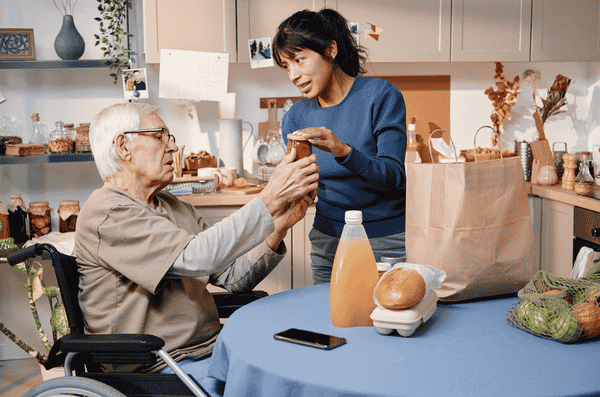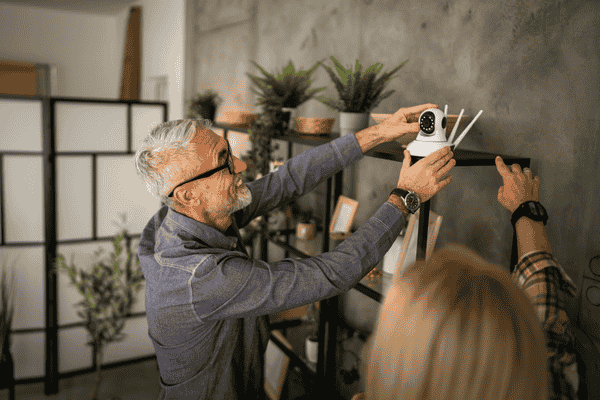The soft morning light filters through the kitchen window as Emily carefully measures out John’s morning medications. “Just like our morning coffee ritual,” she says with a gentle smile, arranging the pills in their designated compartments. This daily routine has become second nature to Emily since her husband John’s Parkinson’s diagnosis two years ago, marking the beginning of their transformed journey together.
The Path of a Dedicated Caregiver
Emily remembers vividly the day they received John’s diagnosis. Sitting in the neurologist’s office in downtown Toronto, the words “Parkinson’s disease” seemed to echo through the room, leaving them both momentarily stunned. The drive home along the familiar streets of their Ontario neighborhood felt surreal, their minds racing with questions about what the future might hold. “I remember squeezing John’s hand at every red light,” Emily recalls, her voice softening at the memory. “We didn’t say much, but somehow, we both knew we would face this together.”
In the months that followed, Emily immersed herself in understanding Parkinson’s disease, transforming their home office into a command center of medical information, support group contact numbers, and carefully crafted care schedules. She connected with the Parkinson’s Society of Ontario, finding invaluable resources and a community of caregivers who understood exactly what she was experiencing. Through their shared stories and experiences, Emily discovered that while each journey with Parkinson’s is unique, the threads of love, dedication, and resilience bind caregivers together in an unspoken understanding.
The initial period of adjustment was particularly challenging. Emily found herself navigating unfamiliar territory, learning to balance her own emotions while providing the support John needed. “There were nights when I would lie awake, worried about making mistakes,” she confesses. “But then I realized that perfection wasn’t the goal – being present and committed was what mattered most.”
Their home, once a place of familiar comfort, required thoughtful modifications to accommodate John’s changing needs. Emily worked with an occupational therapist to assess each room, making necessary adjustments while preserving the warmth and character of their space. The process became a labor of love, with each modification representing their commitment to maintaining John’s independence and dignity.
The daily rhythm of caregiving brought new challenges and unexpected moments of tenderness. John, once an avid gardener who took pride in maintaining their backyard sanctuary, now works alongside Emily to adapt his beloved hobby. Together, they’ve raised the garden beds for easier access and installed sturdy handrails along the garden paths. “We still plant his favorite tomatoes every spring,” Emily shares, “but now we do it together, and somehow, they taste even sweeter.”
As their journey progressed, Emily learned to navigate the complex maze of healthcare services available in Ontario. She coordinated with their family physician, neurologist, and physiotherapist, creating a comprehensive care team dedicated to supporting John’s well-being. The Ontario Health Insurance Plan (OHIP) coverage became a crucial resource, helping them access necessary medical care and specialized treatments without the additional burden of financial stress.
Embracing Each Day with Purpose and Hope
The progression of Parkinson’s brought changes to their daily life, but Emily approached each new challenge with determination and creativity. When John’s hand tremors made using standard utensils difficult, she researched adaptive equipment and found weighted silverware that helped him maintain independence during meals. Their bathroom underwent a transformation with the installation of grab bars and a walk-in shower, making personal care safer and more manageable.
Emily’s role as a caregiver extends beyond physical assistance. She became attuned to the subtle changes in John’s symptoms, learning to recognize when his medication was wearing off or when he needed extra emotional support. “Some days are harder than others,” she admits, “but we’ve learned to find joy in the small victories – like when John successfully buttons his shirt or when we complete a puzzle together.”
The couple’s living room now hosts regular exercise sessions, where Emily guides John through physiotherapy exercises recommended by their healthcare team. They’ve incorporated elements of tai chi and gentle stretching, activities that help maintain flexibility and balance while providing an opportunity for connection. Music often fills their home during these sessions, as they discovered that rhythm can help John maintain steadier movements.
Communication became increasingly important as they adjusted to their new reality. Emily learned to listen not just to John’s words, but to understand his unspoken needs. They developed their own system of nonverbal cues, allowing John to maintain his dignity while communicating his needs. “Sometimes, it’s just a look we share,” Emily explains. “After forty years of marriage, you develop an understanding that goes beyond words.”
Nutrition became another focal point of their care routine. Emily researched foods that could support brain health and potentially help manage Parkinson’s symptoms. Their kitchen became a laboratory of nutritious experiments, with Emily incorporating omega-3 rich fish, colorful vegetables, and brain-boosting berries into their meals. “John has always loved cooking,” Emily shares, “so we make meal preparation a team effort. He sits at the kitchen island choosing recipes and directing our culinary adventures while I handle the more physical aspects of cooking.”
The emotional landscape of caregiving brought its own set of challenges. Emily learned the importance of maintaining her own well-being, carving out time for self-care even when it felt impossible. She joined a caregiver support group at their local community center, where she could share her experiences and learn from others walking similar paths. These connections became lifelines during difficult days, offering understanding and practical advice when needed most.
Their children, living in nearby cities, provide another layer of support. Regular family dinners become occasions for shared laughter and creating new memories. Emily’s daughter Sarah often steps in to provide respite care, allowing her mother time to attend yoga classes or meet friends for coffee. “It’s a family journey,” Emily reflects. “Each person plays a vital role in supporting not just John, but our entire family unit.”
Technology has become an unexpected ally in their caregiving journey. Emily uses smartphone apps to track John’s medication schedule and symptoms, sharing this information with their healthcare team to ensure optimal treatment. They’ve also embraced video calls to maintain connections with friends and family members who live farther away, creating a virtual support network that spans across Ontario and beyond.
The financial aspects of caregiving required careful planning and organization. Emily worked with a financial advisor to understand their options and ensure they could access the resources available through various support programs. She learned to navigate the paperwork required for disability benefits and medical expense claims, developing systems to keep their financial affairs in order while focusing on John’s care.
As they look toward the future, Emily and John maintain a realistic yet hopeful outlook. They understand that Parkinson’s is a progressive condition, but they choose to focus on making each day meaningful. They’ve adapted their travel plans, opting for shorter trips to familiar places where they can easily access medical care if needed. Their cottage in Muskoka has become a favorite retreat, its peaceful setting providing a perfect environment for rest and rejuvenation.
The journey of caring for a loved one with Parkinson’s has taught Emily profound lessons about resilience, adaptability, and the enduring power of love. Through the challenges and triumphs, she and John have discovered new depths to their relationship. “Parkinson’s may have changed our lives,” Emily reflects, “but it hasn’t changed who we are to each other. If anything, it’s shown us just how strong our bond truly is.”
Their story serves as a beacon of hope for other families navigating the complexities of Parkinson’s disease. It demonstrates that while the path may not be easy, with love, support, and dedication, it’s possible to maintain quality of life and find moments of joy along the way. As Emily and John continue their journey together, they remind us that in the face of health challenges, the human spirit’s capacity for adaptation and growth knows no bounds.






It’s well-recognized that one behavior of sharp (huge) bettors is to fade the public;
if you recognize that Pinnacle Sports supplied one of the best worth out
there on the Royals’ opponents in all three video games, you understand why the general public was
betting against Kansas City, and what those sharps saw to keep the market in verify.
A period of consolidation and learning adopted – Pinnacle Sports
is known for welcoming winners and utilizing sharp clients to assist form lines, this was especially true in the development of
our eSports markets. That is especially true in fields where the
principles change. That won’t be true for many companies, although.
Many eSports sites had been providing non-money betting, however its digital context meant that
this was new floor for Pinnacle Sports – one of the world biggest on-line bookmakers for mainstream sports activities.
Though we knew there was an enormous appetite for eSports betting,
we didn’t assume that the wider eSports group would essentially be
welcoming. Simon from Canada showed there was a demand amongst Pinnacle Sports’ prospects for eSports betting, he placed the first ever guess – on StarCraft2 – and as our timeline reveals, the rest is history.
спрос на них приводит к тому, что
некоторые из них стали платными.